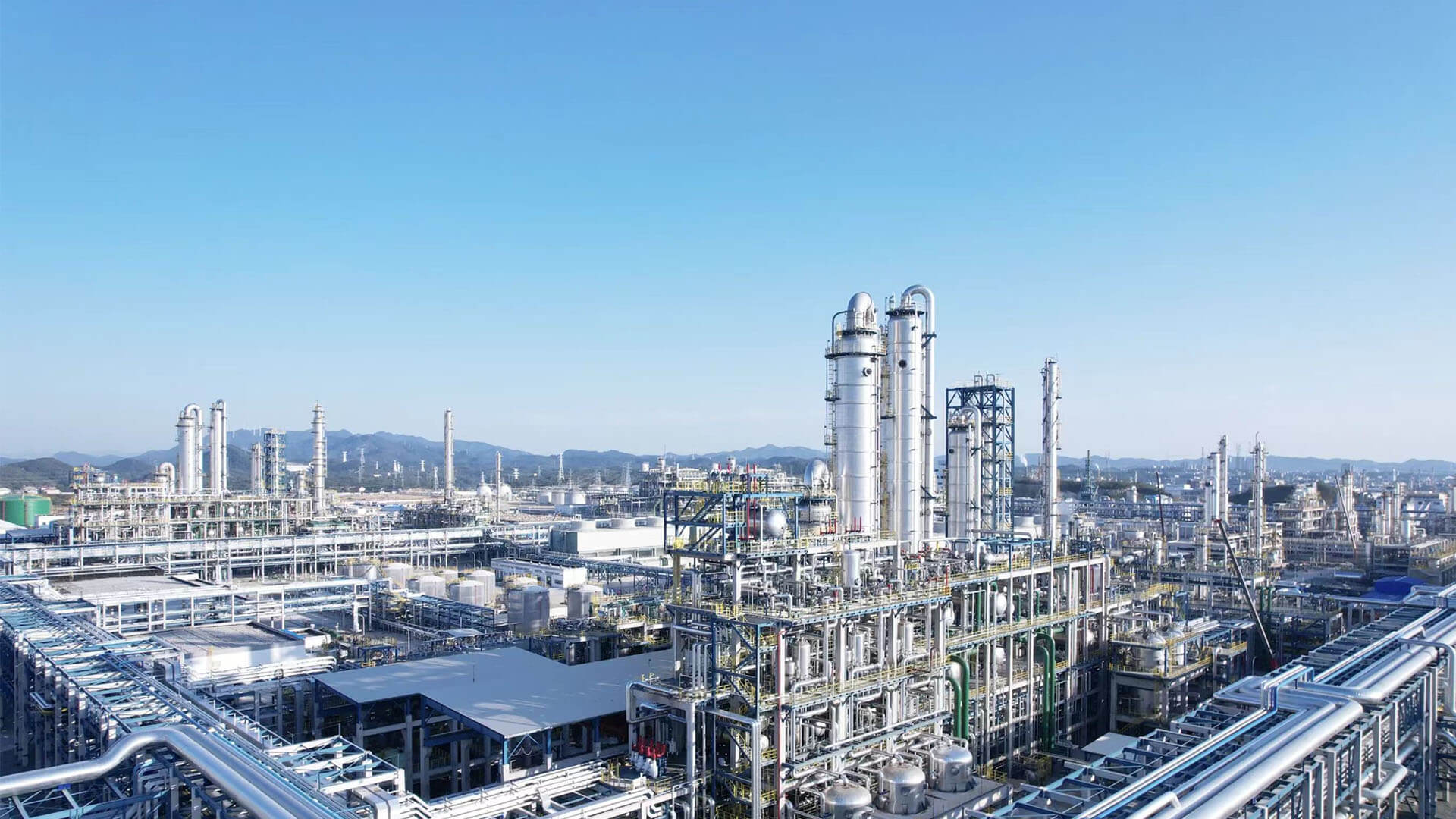
Bio-diesel is synthesized by esterification or transesterification of animal and vegetable oils with short-chain alcohols. Most animal and vegetable oils are mainly triglycerides. The oil is converted into alkyl lipids of monohydroxy alcohols through chemical processes. The low-viscosity fuel produced can directly replace diesel fuel. The main chemical reaction is transesterification.
Through the transesterification reaction, the glycerin in the oil reacts with the alcohol under the action of a catalyst. The reaction process consumes the glycerin to generate glycerol and short-chain alcohol fatty acid esters.
Bio-diesel is highly valued by countries around the world as a renewable fuel and plays an important role in reducing carbon emissions.
The raw materials of bio-diesel are widely available. All animal and vegetable oils, waste kitchen oils, free fatty acids, etc. can be used as raw materials. The products are fatty acid methyl esters (biodiesel) and glycerol.
Raw oil → degumming → neutralization → ester exchange → bio-diesel
Main process description of acid-base bio-diesel:
1. Top-grade degumming of raw materials
Use nano-knife mixer and disc centrifuge to reduce the free fatty acid and phospholipid content in the raw materials through acid and alkali reaction, ensure that the ester exchange reaction and glycerol quality meet the pharmaceutical grade standard, and the phosphorus content in the raw oil can be reduced to below 10 ppm after this process.
2. Alcohol neutralization
Alcohol neutralization is one of the core technologies of this process. It is used to purify oil and fat so as to enter the continuous esterification section. It integrates degumming and caustic neutralization of free fatty acids. Alkaline glycerol-methanol-phase is used to neutralize free fatty acids. This is a unique process step to increase the yield of fatty acid methyl ester products—the free fatty acids in the degummed oil are further separated from the oil, and then esterified to generate bio-diesel in the subsequent process. In this way, the conversion rate of degummed oil in bio-diesel products can reach more than 95%.
3. Ester exchange
After the alcoholized oil, methanol and sodium methoxide are mixed twice in a dynamic mixer, subjected to two ester exchange reactions and separated by a centrifuge, they are separated by two water washes and then dried to obtain the bio-diesel product. The separated glycerol methanol water enters the next process section. Its process characteristics: The U-type reactor can achieve timely separation of glycerol and improve the reaction speed. The use of a centrifuge for separation can greatly reduce the content of free glycerol, reduce the reverse reaction and improve the conversion rate; Two water washes can ensure the quality of biodiesel;
4. Methanol recovery and glycerol concentration
The excess methanol in the bio-diesel reaction is fractionated and recovered. The mixture of glycerol, methanol and water is first treated with acid to separate fatty acids, and then methanol is recovered by distillation. The methanol purity is greater than 99.9%, and the water content is less than 0.1%. It is recycled and reused, and the glycerol water enters the next process. The glycerol water is concentrated by three evaporations to obtain more than 80% crude glycerol. After heating, the crude glycerol is vacuum dehydrated to reduce its water content. The glycerin concentration part adopts negative pressure evaporation, secondary steam utilization and condensed water recycling process. After the transesterification reaction is completed, the product needs to be washed twice to meet the standard. The device uses the acidic water evaporated from the glycerin concentration part for the final washing, and the separated water is used for the first washing. The workshop condensed water is used as a supplementary water source to form an internal water circulation system, which fully reflects the design concept of water saving, energy saving and emission reduction.
5. Esterification
During the methanol recovery process, 1.5-2% fatty acids can be produced, which can be further reacted to generate biodiesel by acid catalysis, which can increase the bio-diesel yield by about 2%, with significant economic benefits.
6. Glycerol refining
Before the crude glycerol enters the distillation tower, it is first vacuum dried, then sodium hydroxide is added to adjust the pH value, and then distilled and deodorized under alkaline and vacuum conditions. The distilled part is decolorized with activated carbon, and finally medical-grade glycerol (refined glycerol) is obtained with a purity of more than 99.9%. The residual part is then evaporated at high temperature by a thin film evaporator to recover the residual glycerol. The process design uses a four-stage high-pressure steam ejector heat exchange vacuum device and a glycerol thin film evaporator, which has significant energy-saving and emission reduction effects and a higher yield.
7. Water recycling process
The water recycling system makes the most of the acidic wastewater generated by glycerol concentration for washing bio-diesel. Wastewater discharge is limited to the hot wells of the glycerol refining part, with a normal production of about 1.5 tons/hour. Wastewater discharge 1.5-2.0t/h Workshop condensate Glycerol methanol Degumming oil Alcohol neutralization 1-water washing 2-water washing Triple-effect evaporation Glycerol refining Ester exchange Water storage tank Drying Tail gas recovery Refined glycerol Bio-diesel Vacuum hot well Glycerol methanol acid treatment Methanol recovery
8. Wastewater treatment device
The production wastewater enters the wastewater regulating tank, where it is homogenized and adjusted. After adjusting the pH value, it enters the oil separation sedimentation tank, and then enters the flotation separation device. After removing most of the suspended matter and organic matter in the water, it enters the hydrolysis acidification tank for acidification treatment. After acidification treatment, it is treated by the contact oxidation tank for oxygen consumption. After oxygen consumption treatment, the effluent is separated into solid and liquid, and the separated effluent meets the discharge standards.
The main equipment includes:
Transesterification tower, centrifuge, esterification unit, glycerin triple-effect evaporator, vacuum system, storage tank
This process uses waste oil and methanol as raw materials. Through the processes of top-level degumming, alcohol neutralization, transesterification-esterification, methanol recovery and glycerin concentration and refining, under the action of catalyst, oil and free fatty acids are transesterified or esterified with methanol to obtain bio-diesel and glycerin. The process is advanced and highly automated. The concept of safety, low carbon and energy saving is reflected everywhere in the process design. Its main features are as follows: The entire device realizes PLC automatic control to achieve the interlocking of quality, process parameters and safety facilities; Six-time heat exchange measures are used, heat energy is efficiently utilized, and the energy-saving effect is significant; Alcohol neutralization, transesterification-esterification process, bio-diesel yield is higher and quality is better; Workshop process water is recycled, steam condensate is fully reused, and wastewater discharge is small; Because methanol has high flammability and explosiveness, the entire system adopts nitrogen sealing protection, and safety facilities and measures are guaranteed.
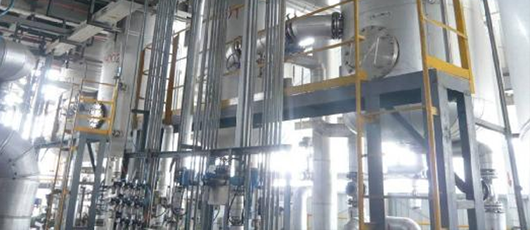
Use nano-knife mixer and disc centrifuge to reduce the free fatty acid and phospholipid content in the raw materials through acid and alkali reaction, ensure that the ester exchange reaction and glycerol quality meet the pharmaceutical grade standard, and the phosphorus content in the raw oil can be reduced to below 10 ppm after this process.
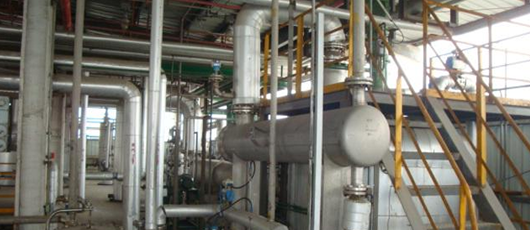
Alcohol neutralization is one of the core technologies of this process. It is used to purify oil and fat so as to enter the continuous esterification section. It integrates degumming and caustic neutralization of free fatty acids. Alkaline glycerol-methanol-phase is used to neutralize free fatty acids. This is a unique process step to increase the yield of fatty acid methyl ester products—the free fatty acids in the degummed oil are further separated from the oil, and then esterified to generate bio-diesel in the subsequent process. In this way, the conversion rate of degummed oil in bio-diesel products can reach more than 95%.
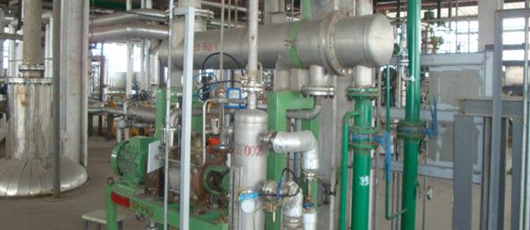
After the alcoholized oil, methanol and sodium methoxide are mixed twice in a dynamic mixer, subjected to two ester exchange reactions and separated by a centrifuge, they are separated by two water washes and then dried to obtain the bio-diesel product. The separated glycerol methanol water enters the next process section. Its process characteristics: The U-type reactor can achieve timely separation of glycerol and improve the reaction speed. The use of a centrifuge for separation can greatly reduce the content of free glycerol, reduce the reverse reaction and improve the conversion rate; Two water washes can ensure the quality of biodiesel;
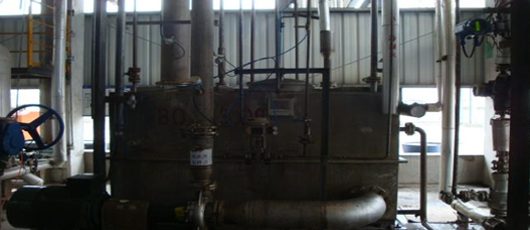
The excess methanol in the bio-diesel reaction is fractionated and recovered. The mixture of glycerol, methanol and water is first treated with acid to separate fatty acids, and then methanol is recovered by distillation. The methanol purity is greater than 99.9%, and the water content is less than 0.1%. It is recycled and reused, and the glycerol water enters the next process. The glycerol water is concentrated by three evaporations to obtain more than 80% crude glycerol. After heating, the crude glycerol is vacuum dehydrated to reduce its water content. The glycerin concentration part adopts negative pressure evaporation, secondary steam utilization and condensed water recycling process. After the transesterification reaction is completed, the product needs to be washed twice to meet the standard. The device uses the acidic water evaporated from the glycerin concentration part for the final washing, and the separated water is used for the first washing. The workshop condensed water is used as a supplementary water source to form an internal water circulation system, which fully reflects the design concept of water saving, energy saving and emission reduction.
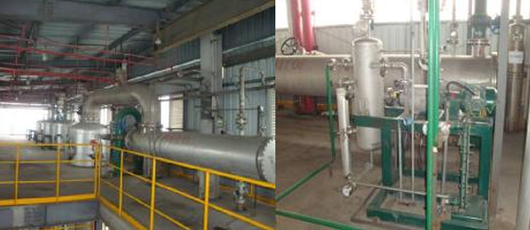
During the methanol recovery process, 1.5-2% fatty acids can be produced, which can be further reacted to generate biodiesel by acid catalysis, which can increase the bio-diesel yield by about 2%, with significant economic benefits.
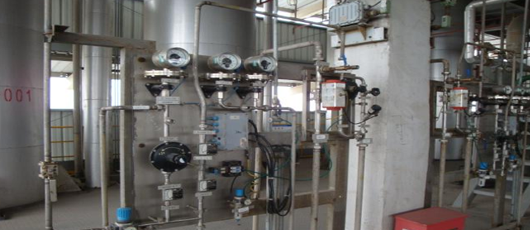
Before the crude glycerol enters the distillation tower, it is first vacuum dried, then sodium hydroxide is added to adjust the pH value, and then distilled and deodorized under alkaline and vacuum conditions. The distilled part is decolorized with activated carbon, and finally medical-grade glycerol (refined glycerol) is obtained with a purity of more than 99.9%. The residual part is then evaporated at high temperature by a thin film evaporator to recover the residual glycerol. The process design uses a four-stage high-pressure steam ejector heat exchange vacuum device and a glycerol thin film evaporator, which has significant energy-saving and emission reduction effects and a higher yield.
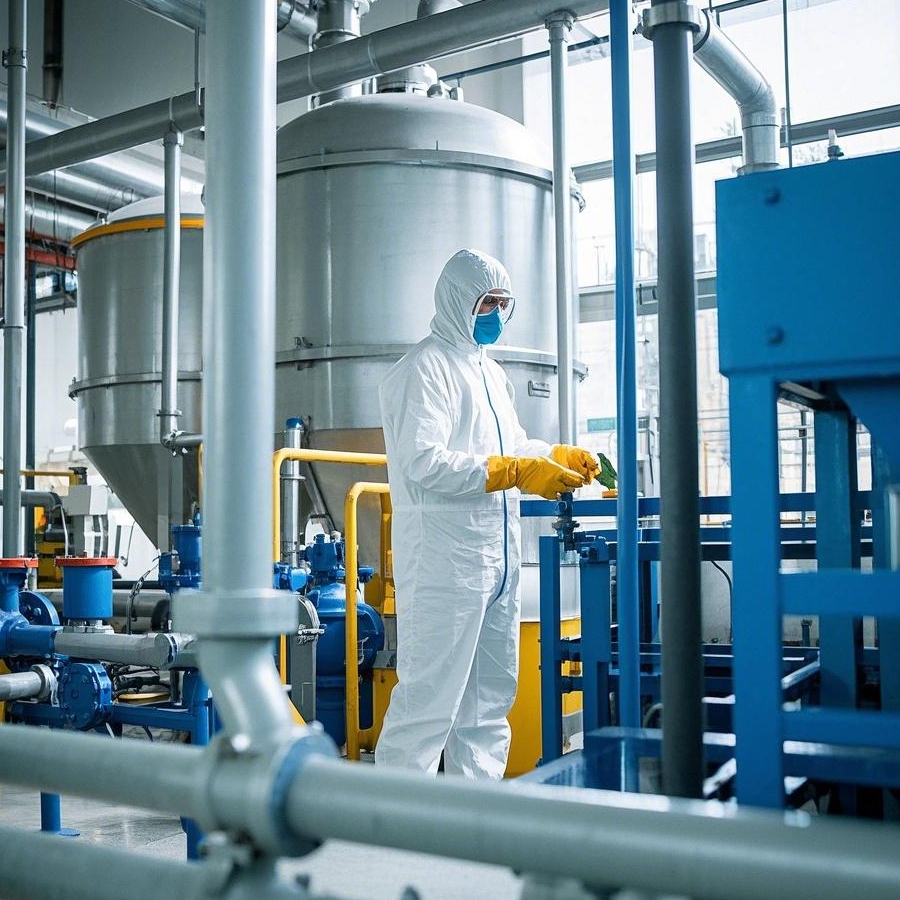
The water recycling system makes the most of the acidic wastewater generated by glycerol concentration for washing bio-diesel. Wastewater discharge is limited to the hot wells of the glycerol refining part, with a normal production of about 1.5 tons/hour. Wastewater discharge 1.5-2.0t/h Workshop condensate Glycerol methanol Degumming oil Alcohol neutralization 1-water washing 2-water washing Triple-effect evaporation Glycerol refining Ester exchange Water storage tank Drying Tail gas recovery Refined glycerol Bio-diesel Vacuum hot well Glycerol methanol acid treatment Methanol recovery

The production wastewater enters the wastewater regulating tank, where it is homogenized and adjusted. After adjusting the pH value, it enters the oil separation sedimentation tank, and then enters the flotation separation device. After removing most of the suspended matter and organic matter in the water, it enters the hydrolysis acidification tank for acidification treatment. After acidification treatment, it is treated by the contact oxidation tank for oxygen consumption. After oxygen consumption treatment, the effluent is separated into solid and liquid, and the separated effluent meets the discharge standards.